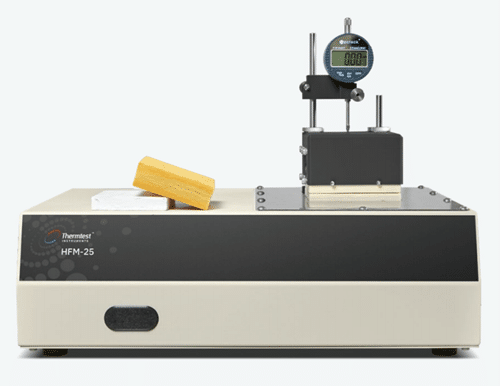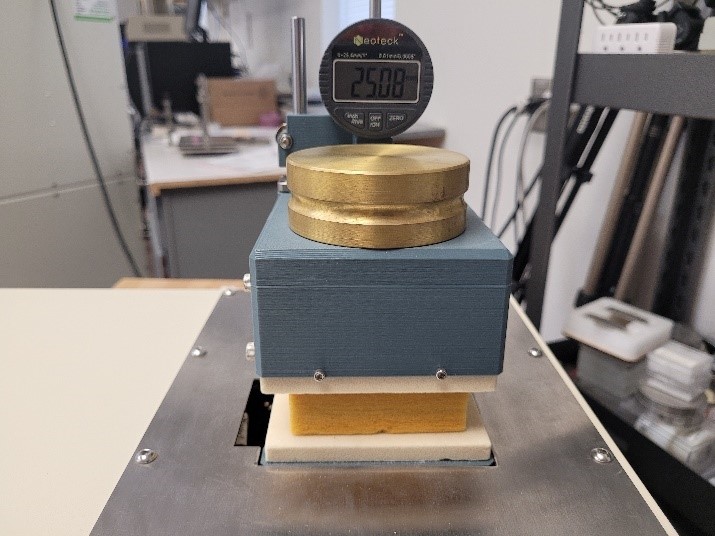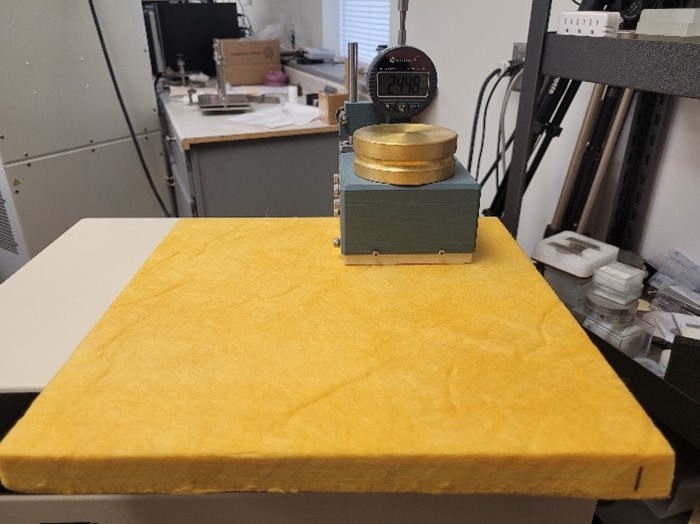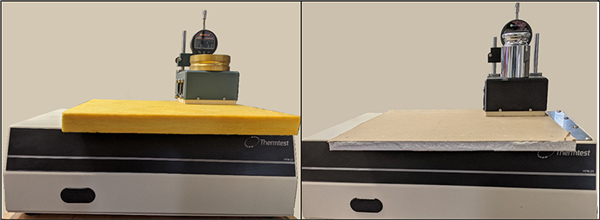The Heat Flow Meter (HFM-25) for testing thermal resistance and thermal conductivity of insulation and construction materials. Offering the testing power of a full-size heat flow meter, optimized for small insulation samples and budget. The HFM-25 is controlled by the included HFM Software, offering automation of calibration, testing, and results summary functions.

Picture 1. Thermtest 25 Series Heat Flow Meter.
Following international standards, the HFM-25 is designed for testing both homogenous and heterogenous materials from 0.01 to 0.5 W/m·K and complies with ASTM C518. The HFM-25 allows for smaller sample sizes which are representative of materials typically found in insulation and construction industries. With an accuracy of 5% and reproducibility of 2%, the Thermtest 25 Series Heat Flow Meter is an excellent instrument for measuring the thermal conductivity of a variety of samples.
For small samples (min 50 x 50 mm), samples can easily be arranged for simple testing.

Picture 2. 50 x 50 mm piece of NIST 1450D
For larger samples (no maximum), samples can conveniently be measured at a specific location.

Picture 3. 300 x 300 mm piece of NIST 1450D
NIST 1450D is a type of fibrous glass board, certified for bulk density and thermal resistance and thermal conductivity. The plasterboard material is heterogenous, consisting of a layer of gypsum plaster between two layers of paper. Both of these materials are commonly found in the construction industry.
Each sample had dimensions of 300 x 300 mm. Locations in each of the four corners (1 x 1 inch location size) of both materials were measured to analyze the thermal conductivity throughout the entire sample and make a determination of heterogeneity or homogeneity. The steady-state method used by the heat flow meter (HFM-25) is quite appropriate for measuring the through-thickness properties of both of these types of samples. For all tests, the upper plate was set to 30°C and the lower plate to 10°C, obtaining an optimal temperature delta of 20 degrees.

Picture 4: Set up of the NIST 1450D (left) and plasterboard (right) samples in the Thermtest HFM-25.
Table 1: Results of thermal conductivity measurements with the Thermtest HFM-25.
| Sample | Measured Thermal Conductivity (W/mK) | Relative Standard Deviation (%) |
|---|---|---|
| NIST 1450D Corner 1 | 0.0305 | 0.98 |
| NIST 1450D Corner 2 | 0.0301 | |
| NIST 1450D Corner 3 | 0.0297 | |
| NIST 1450D Corner 4 | 0.0299 | |
| Plasterboard Corner 1 | 0.1166 | 4.1 |
| Plasterboard Corner 2 | 0.1268 | |
| Plasterboard Corner 3 | 0.1231 | |
| Plasterboard Corner 4 | 0.1305 |
With a relative standard deviation of less than 1%, the NIST 1450D sample is shown to be homogenous. The thermal conductivity of the plasterboard is less consistent throughout the sample, due to the heterogeneous matrix of this composite material.